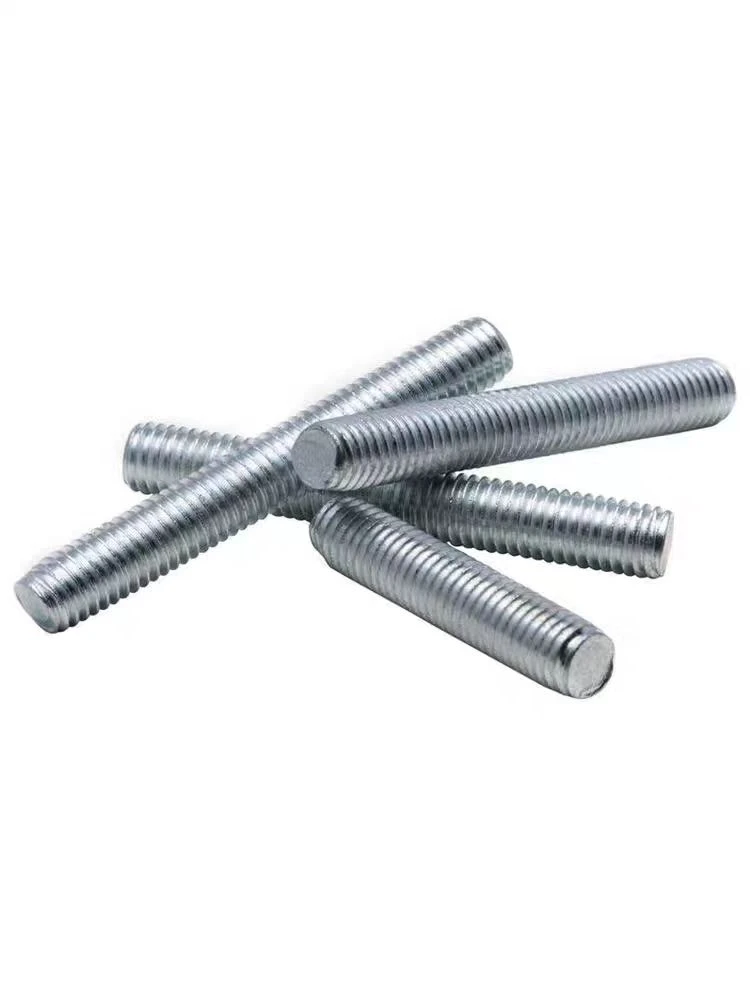

spring washers
Dec . 19, 2024 02:00 Back to list
spring washers
Understanding Spring Washers Essential Components in Mechanical Assemblies
Spring washers, often overlooked in the vast array of mechanical components, play a crucial role in ensuring the integrity and reliability of various assemblies. These devices, uniquely engineered to provide friction and flexibility, are utilized across numerous industries—from automotive to aerospace, and from electronics to heavy machinery. Understanding their design and function is essential for engineers and technicians who aim to enhance performance and prevent failures in mechanical systems.
What Are Spring Washers?
Spring washers are specialized washers that are designed to exert a spring force against the fastener to which they are attached. Unlike regular flat washers, spring washers are typically made from spring steel or other materials that can withstand repeated deflection. Their unique shape often resembles a helical coil or, in more simple forms, a curved disc that allows them to compress and decompress under load. This characteristic provides them with the capacity to absorb shock, maintain tension, and compensate for changes in assembly conditions.
Types of Spring Washers
There are several types of spring washers, each serving distinct purposes depending on the design requirements of an assembly. The most common varieties include
1. Belleville Washers These washers feature a conical shape that can be stacked to create a variable spring force. They are widely used in applications requiring a high load capacity in a compact space.
2. Wave Washers These are characterized by a wave-like profile. When installed, they can flex under load, allowing for consistent clamping force. They are often used in applications where axial loads are present.
3. Tension Washers Also known as lock washers, these feature a split design that provides locking characteristics to prevent loosening under vibration. They are essential in maintaining tension in bolted connections.
Applications and Benefits
spring washers

Spring washers are instrumental in a variety of applications, primarily where movement and vibration are prevalent. For instance, in automotive assemblies, they are used to secure components such as cylinder heads and exhaust systems, mitigating the risks of loosening due to engine vibrations. In the electronics sector, spring washers help maintain consistent pressure in connectors and circuit boards, ensuring reliable electrical contact.
The benefits of using spring washers include
- Vibration Resistance Their ability to absorb vibrations helps maintain the integrity of fasteners in dynamic environments, reducing the likelihood of mechanical failure.
- Compensation for Wear As components wear over time, spring washers compensate for the loss of material or deformation, ensuring that the connection remains secure.
- Improved Load Distribution By distributing the load over a larger area, spring washers reduce the risk of damage to components, prolonging their lifespan.
Installation Considerations
When selecting and installing spring washers, it’s important to consider the specific requirements of the application. The load capacity, operating environment, and potential for corrosion all play a role in determining the appropriate washer type. Additionally, correct installation is crucial; improper fitting may negate the washer’s benefits, leading to failure.
Conclusion
In summary, spring washers are essential components that contribute significantly to the performance and reliability of mechanical assemblies. Their unique design allows them to provide spring action, maintain tension, and resist loosening due to vibrations. By understanding their various types and applications, engineers and technicians can make informed decisions that enhance the durability and efficiency of their projects. Whether in a car engine or a high-tech electronic device, the humble spring washer proves to be a vital player in the complex world of mechanical engineering.
Latest news
-
Hot Dip Galvanized Bolts-About LongZe|High Strength, Corrosion Resistance
NewsJul.30,2025
-
High-Strength Hot Dip Galvanized Bolts - Hebei Longze | Corrosion Resistance, Customization
NewsJul.30,2025
-
Hot Dip Galvanized Bolts-Hebei Longze|Corrosion Resistance&High Strength
NewsJul.30,2025
-
High-Strength Hot-Dip Galvanized Bolts-Hebei Longze|Corrosion Resistance&High Strength
NewsJul.30,2025
-
Hot Dip Galvanized Bolts-Hebei Longze|Corrosion Resistance&High Strength
NewsJul.30,2025
-
Hot Dip Galvanized Bolts - Hebei Longze | Corrosion Resistance, High Strength
NewsJul.30,2025

